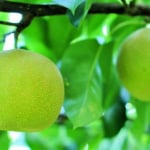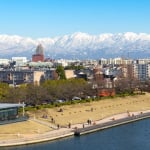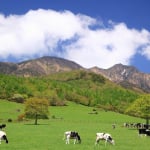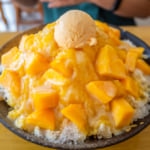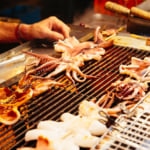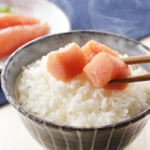Photo by okimo/Shutterstock
8 Foods You Have to Try in Okinawa, Japan
While many know Okinawa for its colorful coral reefs, dive spots and beach resorts, this sunny archipelago is also home to many delicious cuisines and filling comfort foods influenced by Japanese, Chinese and American cultures. The warm, mild climate allows for tropical fruits like pandan, pineapple and sugar cane, while the vast surrounding oceans supply fresh seafood to kitchens around the islands. From up-and-coming superfoods from the sea to a twist on the Tex-Mex classic, be sure to try one of these eight essential Okinawan dishes while visiting this island chain and find out which one is your favorite.
table of contents
[x] close
8 Foods You Have to Try in Okinawa, Japan
Pork Tamago Onigiri
The pork tamago onigiri ('pork and egg rice ball') is the Okinawan version of the quintessential Japanese onigiri. This handheld snack is made by wrapping fried scrambled egg and pork - typically canned, processed luncheon meat - with sticky rice and a strip of nori seaweed. Canned luncheon meat such as Spam was an essential component in the diet of American troops stationed in Okinawa during the war, and has been popular throughout the islands ever since. While there are specialty shops for pork tamago onigiri, you can also find them in grocery and convenience stores, but they are rare in Japan outside of Okinawa.
Sata-andagi
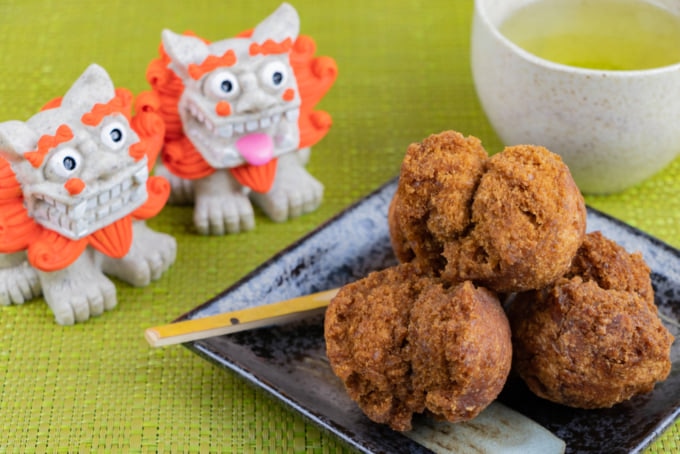
Photo by Princess_Anmitsu/Shutterstock
Sata-andagi mean 'fried sugar' in the local Okinawan language. These sweets are made with a mixture of wheat flour, eggs and brown sugar, and are traditionally fried in lard. The result is a crispy on the outside, moist on the inside treat similar to heavy pound cake or a cake doughnut. Sata-andagi can be found throughout Okinawa at specialty stands as well as grocery stores, and are a filling but not too sweet snack.
Okinawa Soba
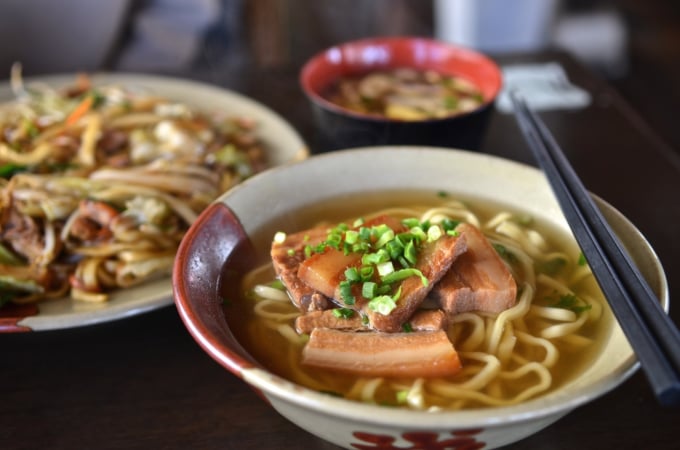
Photo by online.eric/Shutterstock
Okinawa soba noodles are made with wheat flour rather than buckwheat, making for chewier, more glutinous noodles similar to udon. The noodles get their yellowish appearance from the use of lye water, a technique commonly used when making Chinese-style noodles for ramen or yakisoba (fried noodles). While in mainland Japan buckwheat soba is usually served with dashi (fish broth) or a light dipping sauce known as tsuyu, Okinawa soba comes with a rich broth flavored with bonito flakes, pork and seaweed and more closely resembles ramen. The usual toppings for Okinawa soba are pickled ginger, scallions and 'soki' (pork ribs) or pork belly.
Champuru
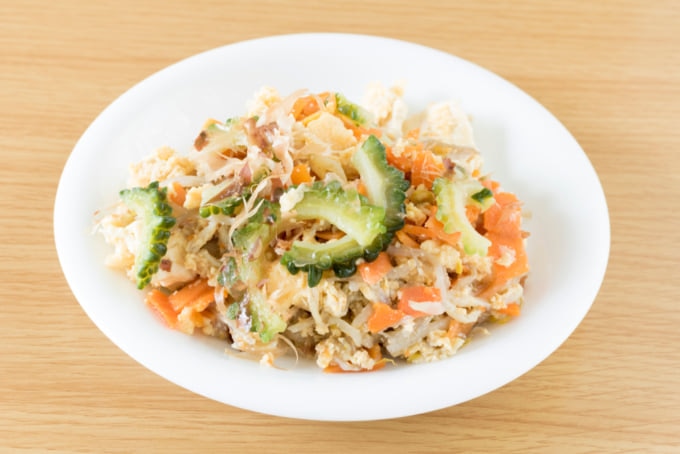
Photo by pu_kibun/Shutterstock
Known as 'champuru' in Japanese or 'champloo' in Okinawan, this simple stir fry dish is a classic example of Okinawan home cooking. The classic Okinawan champuru starts with thick slices of tofu, bean sprouts and cabbage. Canned luncheon meat, shrimp and goya (bitter gourd) can also be added. The dish is usually named after the primary ingredient, for example tofu champuru or goya champuru, but it can still contain all of the above ingredients. Champuru is an easy dish to make at home but you can also find it at izakaya, shokudo (diners) and grocery stores throughout Okinawa.
Taco Rice
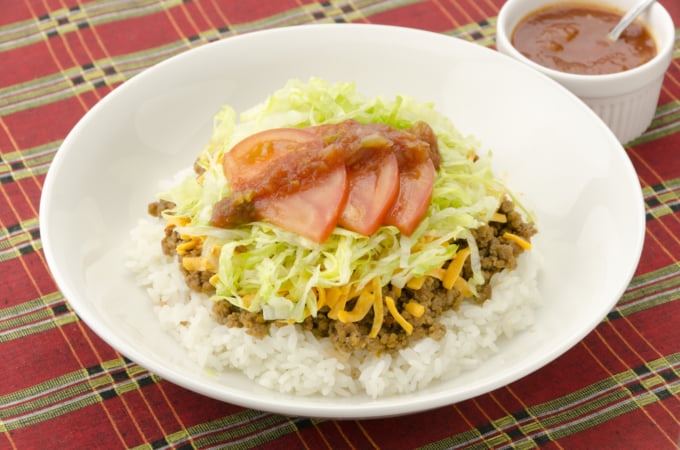
Photo by kariphoto/Shutterstock
After World War II, Okinawa was ruled under a United States military government for 27 years, and today nearly 20 percent of the main island's land mass is occupied by American military bases. The presence of these military personnel brought about big changes to the traditional Okinawan diet. Taco rice is one such result of these two cultures clashing, invented as a localized version of American Tex-Mex tacos. Taco rice is made with seasoned ground beef, diced tomatoes, cheese and lettuce on a bed of warm rice, and is one of the most well-known dishes from Okinawa.
Mozuku
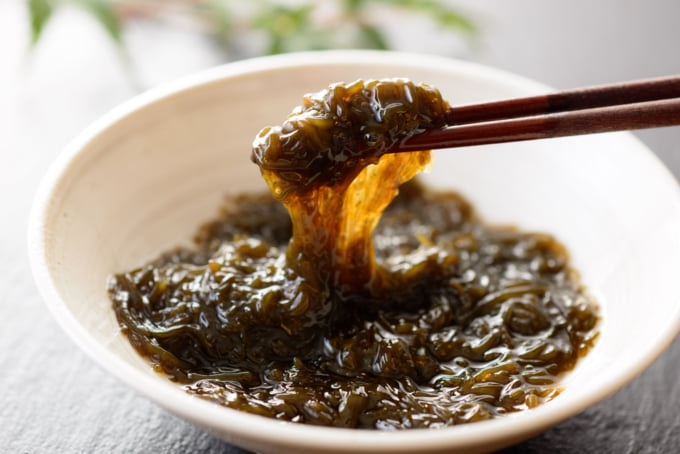
Photo by K321/Shutterstock
Mozuku is a type of edible seaweed that is commonly added to soups, sauces or other dishes. It has a slimy texture and strong salty flavor. Mozuku contains many nutrients and phytochemicals, and is often marketed as a super food and used in health supplements. High levels of the polysaccharide fucoidan are found in mozuku, which has cancer-fighting properties.
Chinsuko
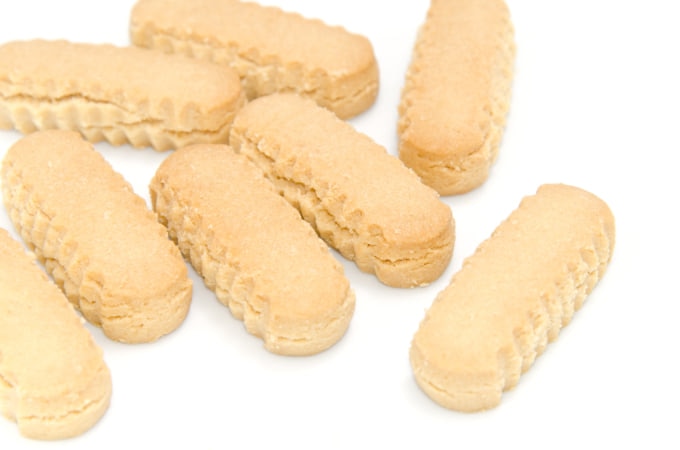
Photo by fdpress/Shutterstock
Chinsuko is a sweet biscuit made with lard, sugar and wheat flour, and is one of the representative sweets of Okinawa. Chinsuko comes in many flavors but some of the most popular are made with Okinawan sea salt, brown sugar or beni-imo (purple yam), ingredients that are well-known in the region. Chinsuko are crisp and lightly sweet with a texture similar to shortbread cookies. Their origin is unclear, but chinsuko have been produced in Okinawa for hundreds of years and may have been influenced by traditional Chinese cookies.
Colorful Seafood
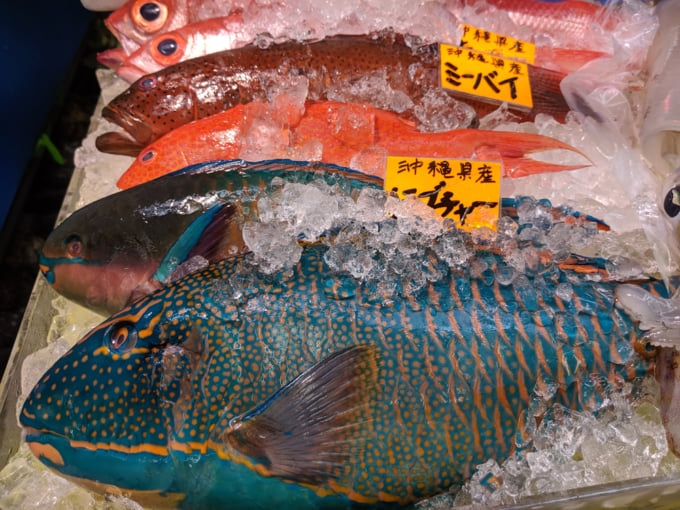
Photo by Makiato Studio/Shutterstock
Visiting one of Okinawa's lively seafood markets is a must while visiting the islands. The region is known not just for its fresh, bountiful seafood harvest but for its colorful tropical fish rare in other regions of Japan, like the Japanese spiny lobster and bright blue parrot fish. The seafood markets let you pick your catch and have it prepared at one of the restaurants located in another section, and are one of the best places to try fresh, seasonal fish in Okinawa.
In Conclusion
Okinawa is an island chain located southwest of Japan's mainland, and is known for its clean, beautiful seas, white sandy beaches and unique Ryukyu culture. The islands were once an independent kingdom with closer ties to China than Japan, and today are home to a diverse food scene influenced by a mishmash of traditional Japanese and Chinese dishes as well as modern American inventions. The islands are known for their sugar cane production and host of brown sugar treats, as well as plenty of fresh seafood and exotic fruits. Discover the staple dishes of Okinawan cuisine and where to find them.
